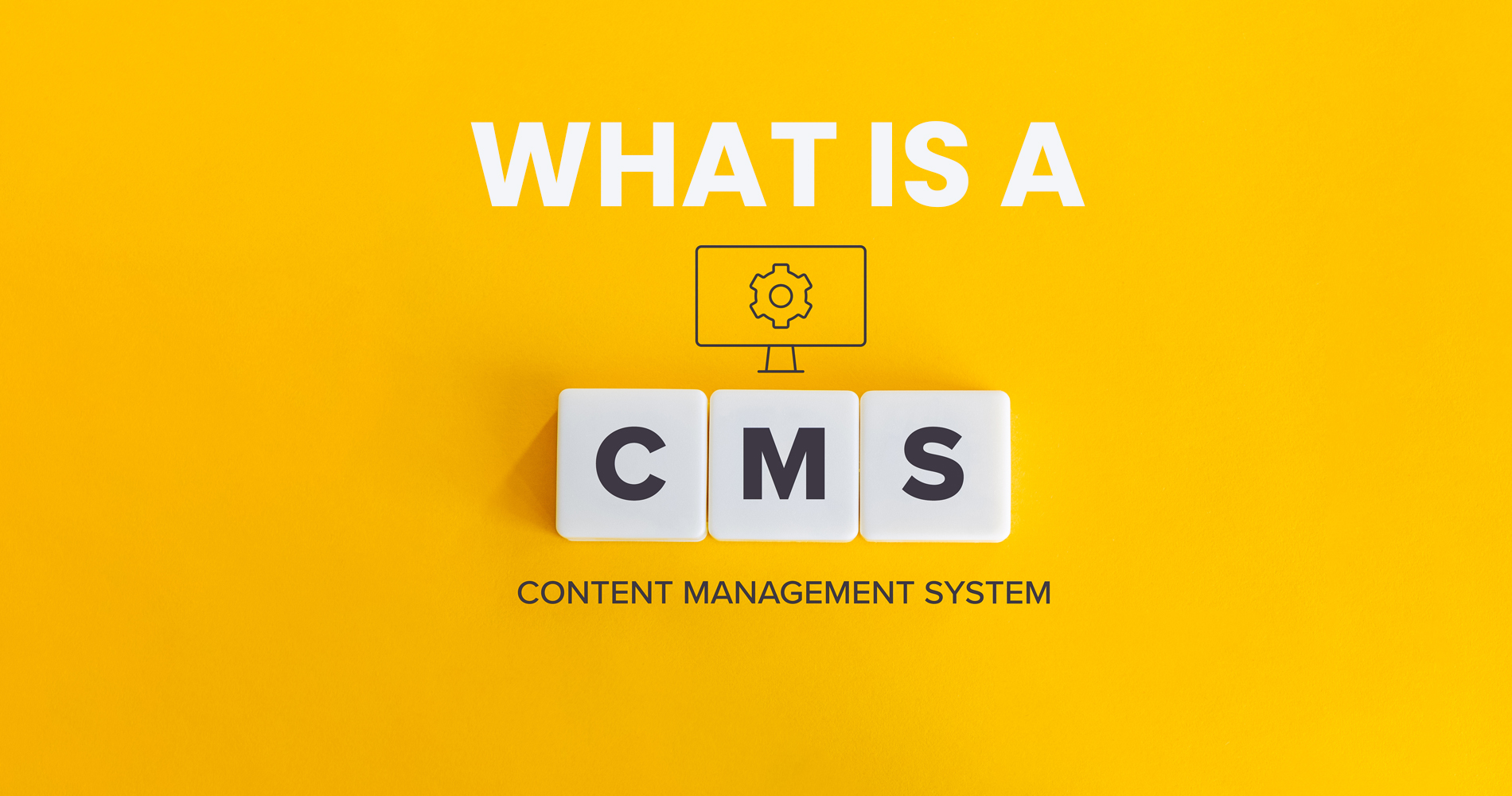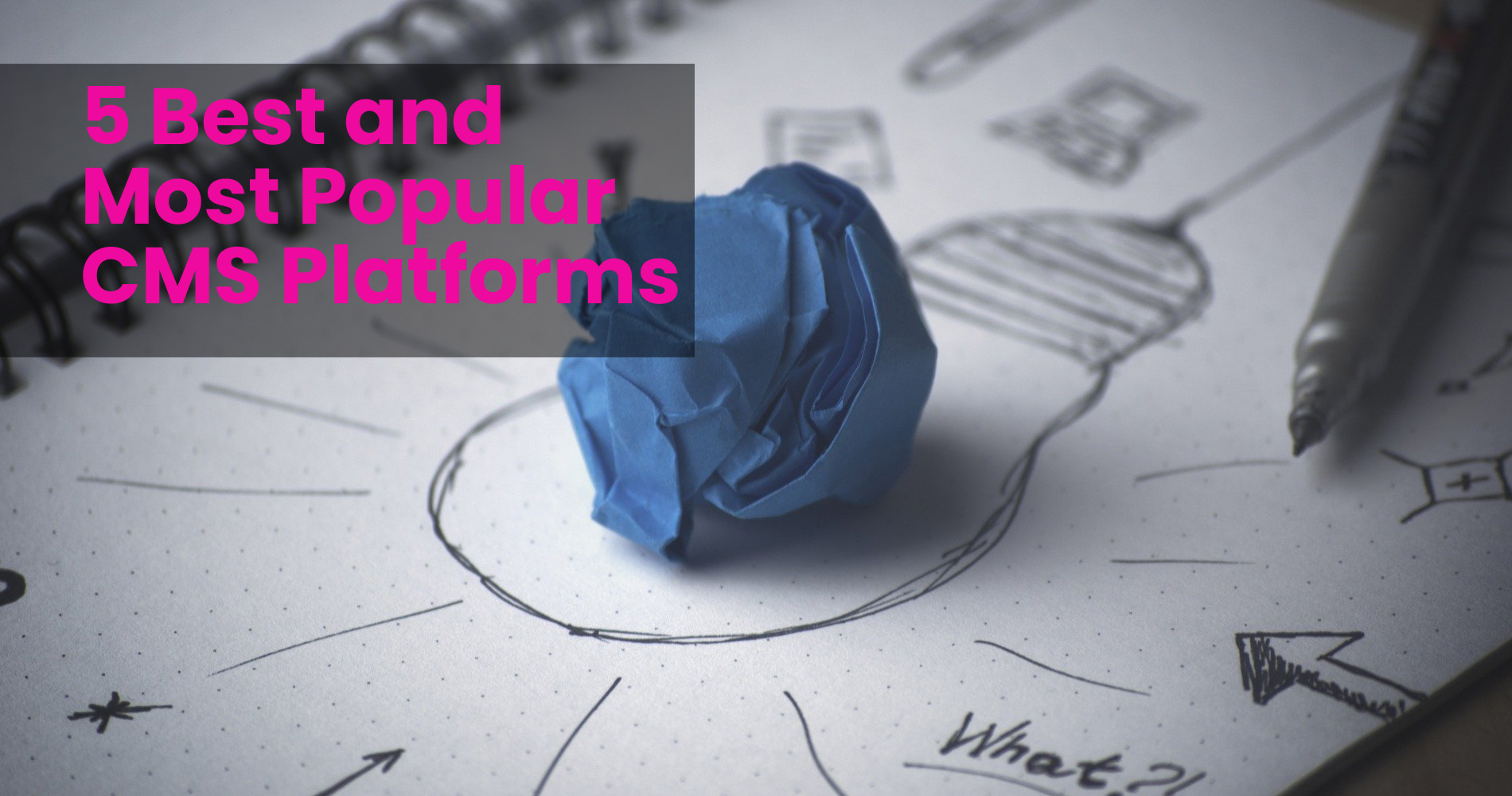Many acronyms float around the business world. However, not all of them are as well known as others. In the digital marketing sector, you'll find a lot of acronyms to take note of because they're pretty important. SEO, CRM, SERP, and CMS are just a few important ones; however, one is particularly important due to the sheer number of websites built on top of it: more than 68 million worldwide! This acronym is CMS or a content management system.
So, what is a CMS? Website owners use CMS products such as WordPress or Hubspot CMS to make website pages in minutes instead of days by allowing them to easily design and host their sites through WYSIWYG tools.
In this post, we’re going to define what a CMS is and how they work before investigating how they can help you save time and effort when building your site so that you can focus your efforts on what matters - creating exciting, delightful content that results in more conversions and leads for your business.
What is a content management system (CMS)?
A CMS is a type of software that includes modules, assets, and user roles. Modules are all the individual parts of your site – pages, posts, media files, and templates – that have been combined to enable you to create your website using a pre-international framework. You can add posts and pages via an administrator panel, writing in plain English rather than coding and when it comes down to functionality, you can use built-in tools and features like contact forms, webform subscriptions, calendars, and social network sharing buttons. This makes changing settings a breeze because everything will be laid out intuitively right there in front of you.
You may wonder how one software package can accomplish all of these tasks. Here is how a CMS works to answer that question.
What does a CMS Do?
"To understand a CMS, you have to understand that, first and foremost, it is simply a way of storing data for a website to be built with content.
When you're working on a project that relies on the interactivity of a website, you'd like to have some way of managing those interactions beyond simply modifying HTML code with a text editor. As an experienced entrepreneur, you've appreciated the importance of what others might consider small details. Keeping track of all of your links as well as accommodating new ones quickly and accurately is too time-consuming. You never know when you'll want to change something, which is why having convenient CMS solutions at your disposal is crucial when maintaining digital projects.
You'd start with HTML to add text, images, navigation bars, and other building blocks of a site. Then you'd add CSS to style those elements to match the unique look and feel of your brand.
It does sound daunting, doesn't it? A site built from scratch might be an ideal solution for developers and other advanced users with web development experience. In any case, if you don't have the necessary skills, time, or resources to create and maintain a site from scratch, a CMS can be used. Read on.
Learn how to use a CMS
The CMS allows you to modify various aspects of your site’s structure, style, and content. Most CMS platforms use a modular approach to development—they allow you to drag and drop modules into the administrative workspace giving you flexibility on what features are available for your users. While it does take some time to develop something from scratch, luckily most CMS' have these options for existing themes to prevent you from having to sit down and rebuild them yourself completely from scratch.
Here's an example of how to use WordPress to create a blog post.
- Navigate to the appropriate part of your admin panel to change the permalink structure or install extensions on your site. All these changes in the code are hidden from you, the end-user, in an intuitive interface.
- Once you have finished entering content the CMS will generate a code, display it to the visitors on your front-end, and store it.
In other words, rather than uploading a page to your server manually, you can hit the Publish button to publish a new blog post.
Let's explore the benefits of using a CMS versus building a website by hand or using another website-building tool now that we know what a CMS is, how it works, and how to use it.
What are the benefits of using a CMS?
As we've already mentioned, using a CMS has some distinct benefits, but let's explore some of the specific ways it can improve your set-up process, team productivity, and online visibility.
1. You do not need coding knowledge
By enabling non-developers and business owners to build and maintain their websites without web developers or coding, Content Management Systems provide a valuable resource for creating an online presence without knowing how to code. This can help revolutionise web design as we know it by allowing websites to be built for businesses of all sizes. You can produce and organise content, customise the design of your site, and download extensions to add usability to your site, all without coding. And even if you want to dive deeper with custom codes based on your needs, most platforms do allow you that level of flexibility as well.
2. Collaboration made easy
With a CMS, multiple users can gain access to the back end and work there at the same time. For example, your marketing team might create content, your IT team might implement security protocols, and your developers might write custom code for your theme. You might even get all three teams involved in creating your landing page. Shortly, a CMS can help increase your team's productivity and workflow.
3. Permissions and User Roles
A CMS allows you and your content creators to work together in a safe, stable, and consistent fashion. You will always know that users don't have access to areas they shouldn't because of their assigned roles and permissions by customisable user roles. Simply put, content writers will be able to write, publish, and manage their content without being able to modify any settings or delete third-party plugins you have installed on your site.
You would have to program some fairly complicated conditions and checks just to create user roles and permissions without a CMS.
4. SEO Features and Extensions
You can optimise your site for search engines using both the built-in features and add-ons offered by CMS platforms.
If you use built-in tools or tools from third parties, you can:
- Create unique page titles and meta descriptions
- Choose URL structures that are SEO-friendly
- Make an XML sitemap
- Adding alt text to images
- Redirect your website to 301
- Navigate using breadcrumbs
- Improve the speed of page loading
You can improve your chances of ranking higher in Google and other major search engines by implementing these best practices.
5. Extensions and security enhancements
CMS platforms will help you get your site up and running quickly. In addition to this, however, many of them can help protect your system by providing security through such features as a scan for malware and viruses, a firewall for blocking unverified input from getting processed by the website, an encryption service for securing customer data during transmission, single sign-on accounts enabling customers to access their information more conveniently with fewer login options. Other technologies can help make the transfer of data from point A to B more seamless and secure which may include custom indexes (or search options), CDN connections, etc. These are all some of the remarkable things you'll find on Hubspot CMS Hub, for example!
6. Ready-made templates
Pre-designed templates are available with many CMS platforms, so you can quickly customise the appearance of your website. The templates may also affect your website's functionality.
You can make your site look great on any device by choosing a responsive template, for instance, rather than writing a bunch of code. You can also make a website redesign much faster and easier if you use templates before launching the site. Templates save you design time before your site launches as well as during the process of redesigning the site.
7. Easy-to-use updates
With a CMS, you can amend your website more easily and faster - whether it's a major update, like a website redesign, or a minor, like a new home page image. To update and edit your website's content, you can go to the dashboard of your CMS instead of hiring a freelance developer or trying to edit the code yourself. You can thus ensure that the content of your website is up to date.
8. Integrated blogging functionality
Blogging has numerous benefits, particularly for businesses. It can help generate interest in your services or products and turn that interest into action; it can create differentiation for your business; establish you as an authority in your industry; drive traffic to your site and convert that traffic into leads; attract a community and achieve many other long-term objectives.
When you use a CMS, you can create and post blog content quickly, as most have blog functionality (or extensions) built-in, so you can start enjoying the benefits right away.
9. Editorial Calendar
Developing an editorial strategy requires scheduling content. Creating a site from scratch allows you to schedule content, but you will need to use GitHub and coding tools to do so.
A CMS makes it easy to schedule content. Just click a button. In addition to blog posts, this feature often comes with other features. The CMS Hub, for instance, gives you the option of scheduling blog posts, website pages, landing pages, and emails.
10. Accessibility
An open-source CMS platform lets you access and edits your site from any device that has an internet connection. You don't have to use a device connected to the server or connect remotely to build a site from scratch; that's much easier.
Furthermore, most content management systems offer you a single dashboard or control panel, which lets you control your content, theme, plugins, settings, and more from a centralised location.
When choosing a CMS platform for your website, it's important to consider the benefits of using one. Most CMS platforms have a mobile app that allows you to access the same website content from a mobile device. If the website is built on a CMS platform, it makes it easier to update the content since you don't have to edit code anymore. For example, if you want to add a blog post or edit an image, you simply have to update it in the CMS dashboard, and it will reflect on your website instantly.




